new energy storage:"Storage" forces education "new" adds a new engine
In recent years, China has accelerated the green and low-carbon transformation of its energy sector. By the end of last year, the proportion of renewable energy installed capacity in the total installed capacity of the country's power generation had exceeded 50% for the first time in history, surpassing that of thermal power generation.
The proportion of power generation from renewable energy sources continues to rise, becoming a new force in ensuring power supply. For the power grid, wind power and photovoltaic power generation have the characteristic of "looking at the sky to eat", which is likely to cause fluctuations in power supply. This makes it particularly important to be able to store the excess power generation of renewable energy sources such as wind and light, just like ordinary commodities, for use when needed.
This is when we need "new energy storage", an energy "porter", which refers to energy storage technology other than pumped storage, mainly including electricity storage and heat storage. It is like a large "power bank", "charging" during low electricity consumption periods and "discharging" during peak periods, acting as both a "regulator" and a "safety valve".
Experiment-Practice-Actual Combat: Paving the Way for Energy Storage Innovation
This year's Government Work Report included new energy storage for the first time, pressing the "fast-forward button" for the development of "new energy storage". However, there are many types of new energy storage, many of which are completely new concepts, from "experimental" in the technical sense, to "practical" in the production sense, and finally to "actual combat" with large-scale deployment in various scenarios. How do we overcome these obstacles one by one?
Lately, reporters came to Guangzhou, where there’s the only one state-level manufacturing innovation center for China’s new energy storage field. Scientific researchers and enterprises are pooling their wisdom and efforts to explore a new path for product industrialization, from laboratory to manufacture and then the market.
In the new energy storage innovation center, reporters saw that a 200-acre collaborative innovation base for industry-university-research was under construction.
Deputy General Manager of National and Local Co-construction of New Energy Storage Innovation Center Liu Shi: 这一块地我们现在建设的就是一个220千伏的变电站,未来在那边将是我们规划的电化学储能的六个方向的研发基地。
Liu Shi told us that various new energy storage tests, such as lithium-ion and supercapacitors, will be conducted in the innovation base with the support of substations.
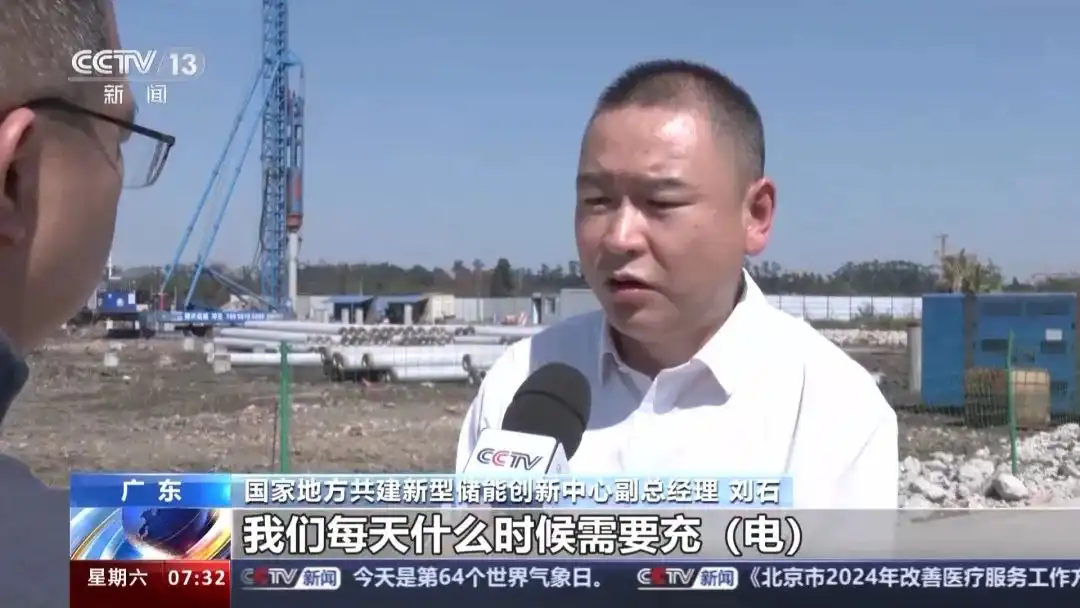
Deputy General Manager of National and Local Co-construction of New Energy Storage Innovation Center Liu Shi: 以前测试数据是实验室跑出来的,不是真实的场景,我们每天什么时候需要充电,什么时候需要放电,通过这种真实的数据跑,从科技创新到我们产业上创新的最后一个距离,我们突破了。
Although the construction site here is still under construction, in the other office of the Innovation Center, many energy storage companies have come to discuss cooperation.
Li Huozhi, Deputy General Manager, Guangzhou Huawen Tomorrow Software Technology Co., Ltd:For our company, the closer we are to the scene, the closer we are to the customers, and the more time we have to prepare.
In order to seize the rare opportunities for development, some enterprises even moved their products to the exhibition hall of the innovation centre.

Since the beginning of this year, in less than two months, more than 20 units have come to discuss cooperation. Among them are not only enterprises, but also scientific research institutions and government agencies. Today, a new energy storage industry chain from laboratory to manufacturing to market is being built here.
Yi Bin - Technology Deputy Director of New Energy and Energy Storage Division, CSG TECH: 从材料到应用端已经是完全贯穿了,那么我们未来的发展规划就是要围绕这里面存在的问题,去做技术攻关和迭代升级,去加速它的进一步规模化应用和发展。
Pooling "Chu" and developing "Xin" on the same street
"Chu Yun Street," named after a street in Baiyun District, Guangzhou, is also the location of the national-level New-Type Energy Storage Innovation Center introduced in the previous article. The new model brings new development opportunities. How can the new energy storage industry better stimulate new momentum? Let's take a look at Guangzhou's initiatives.
Why is a street named after energy storage? At the Baiyun District Investment Promotion Bureau in Guangzhou, the person in charge told the reporter that they are optimistic about the huge development opportunities brought by the development of the energy storage industry.
Mr. Lin Zhifeng, Deputy Director of the Baiyun District Investment Promotion Bureau, Guangzhou:New energy storage is a key development direction that we are currently focusing on. We expect it to be in the trillions, and we firmly believe that it is our future direction.
On a map of the industry development plan, the reporter saw that the local area had already reserved land indicators for the energy storage industry in advance.
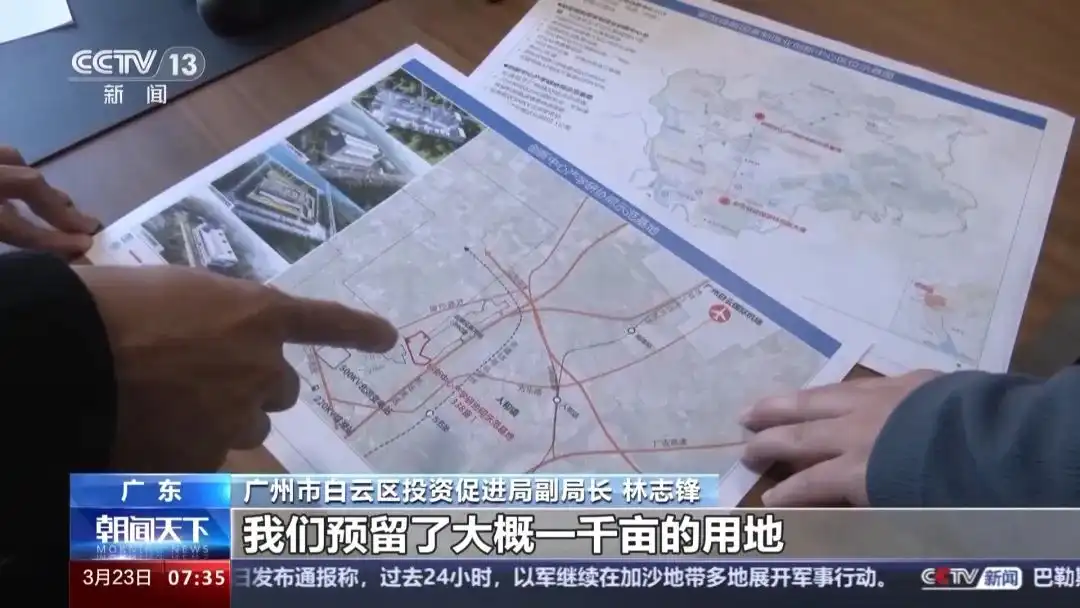
Lin Zhifeng, Deputy Director of Baiyun District Investment Promotion Bureau, Guangzhou City: 这一个红色框框里面就是我们提供给创新中心的产学研协同示范基地的用地,这个红色北部我们预留了大概一千亩的用地,是用于创新成果产业化的产业用地和未来招商引资的用地。
A national energy storage building covering an area of 29,000 square meters is under final decoration on this street, and more than 20 upstream and downstream companies will also gather here.
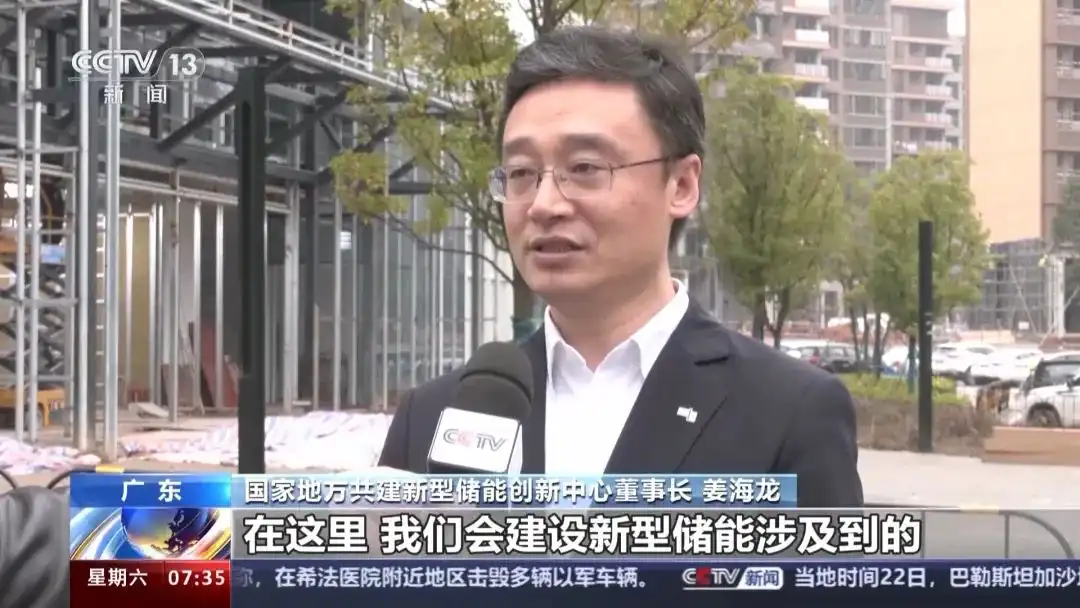
Jiang Hailong, Chairman of the New Energy Storage Innovation Center Co-built by National and Local Governments: 在这里,我们会建设新型储能涉及的材料、器件还有一些接入的测试的实验室、中试产线等等,这些研究人员在一起共同研发,研发出来的成果很快得到测试、认证,加速他们的成果的产业化。
Industry Fosters Innovation by Gathering Talents, Talents Gather at the "Intellectual" Heights
The emerging strategic new energy storage industry is an important component of developing new energy strategic emerging industries, and it is also one of the breakthroughs for creating new business formats for the energy industry and forging new economic engines. In the interview, the reporter found that the innovation center is actively expanding platform advantages, accumulating resource elements such as talent, and accelerating the cultivation of production capacity for new energy storage.
Li Yitao, Co-president of National and Local Joint Construction of New Energy Storage Innovation Center: 我这次去韩国参加电池展,外商非常认同我们的创新能力,中国也有很大的储能市场,他们非常愿意和我们一起合作。
Li Yitao told reporters that a round of recruitment had just been completed not long ago, and that overseas students accounted for 30%. He himself also gave up his position as general manager of a listed company to come here. Now, his workload has increased by four or five times compared to before. He is involved in company recruitment, technical exchanges, and applications for key laboratories, among other things.
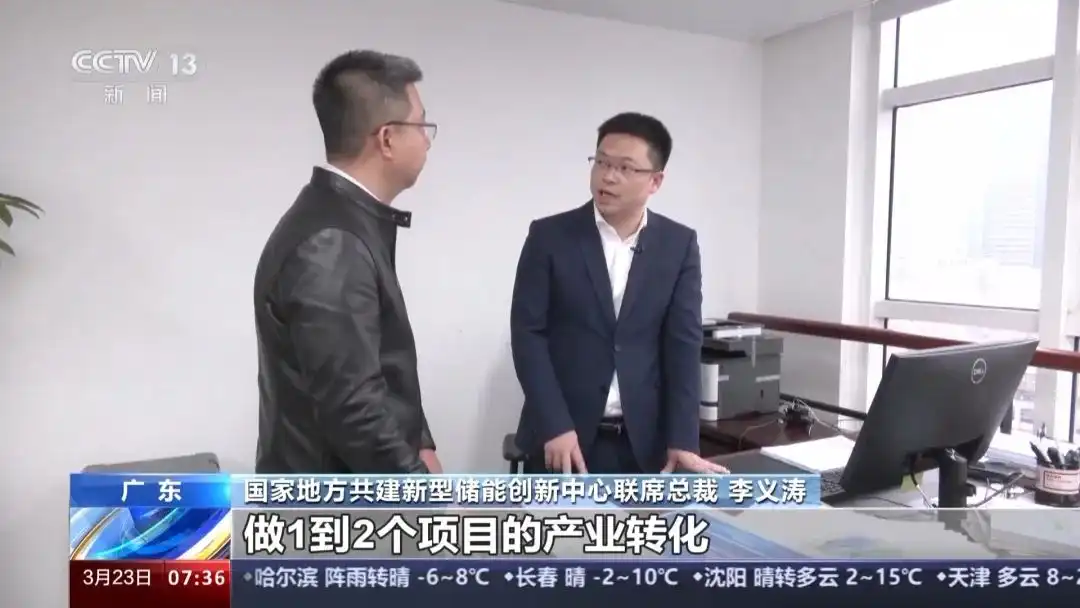
Li Yitao, Co-president of National and Local Joint Construction of New Energy Storage Innovation Center: 我以前就是在一个公司里做1到2个项目的产业转化,现在是要统筹全局,从整个产业链的价值去考虑我们整个项目的布局,这个对我个人思想的成长,或者是我眼界的成长都是非常有帮助的。
The Innovation Center now covers 85% of the key experimental platforms nationwide. The number of alliance units has increased from the original 14 to 68, and 12 academicians and experts have been gathered. Breakthroughs in key storage technologies in five major areas, including electrochemical storage, mechanical storage, and hydrogen storage, are underway, and four of these technologies are now world-leading.

Inside the production workshop of the innovation center, with the rotation of the machine, a liquid-cooled battery pack can be completed every 6 minutes on average. The reporter saw a batch of energy storage containers that will be shipped to Kashi are undergoing the final rainproof test. The capacity of a single container reaches 5 MWh, which can store the electricity generated by 5,000 degrees of wind and light resources.
Zheng Yaodong, Expert Committee Member of Southern Power Grid Co., Ltd.: 假如新型储能的利用能提高风电和光伏1%的消纳率,那全国就会有上百亿度的新能源电供给人们来使用,利用这个国家级的平台做技术创新和商业模式的转化,使储能技术更好地支撑电力系统的运行,这样的经济效益和环境的效益都非常巨大。
Flourishing New Energy Technologies
New energy storage is widely recognized as a “new driving force” for China’s economic development. Thanks to its short construction period, simple and flexible site selection, and strong regulatory capacity, new energy storage has entered the fast lane of development.
In recent years, new types of energy storage technologies have blossomed. For example, the high-rise building in the picture is 148 meters tall and unoccupied, but it "houses" 12,600 gravity blocks, each weighing 25 tons. When there's extra electricity available, the gravity blocks are raised to "charge". During peak electricity usage, gravity is used to generate electricity. One up and one down is one cycle of charging and discharging, which generates about 100,000 kilowatt-hours of electricity that is transmitted to the power grid.
The latest development is the salt cavern energy storage, which is implemented through the compressed air energy storage technology in salt caverns. The salt caverns are the abandoned mines after salt mining, which are ideal places to store compressed air because of their long service life, low cost, safety, environmental friendliness, and small footprint. Thus it has become one of the directions for the development of large-scale energy storage.
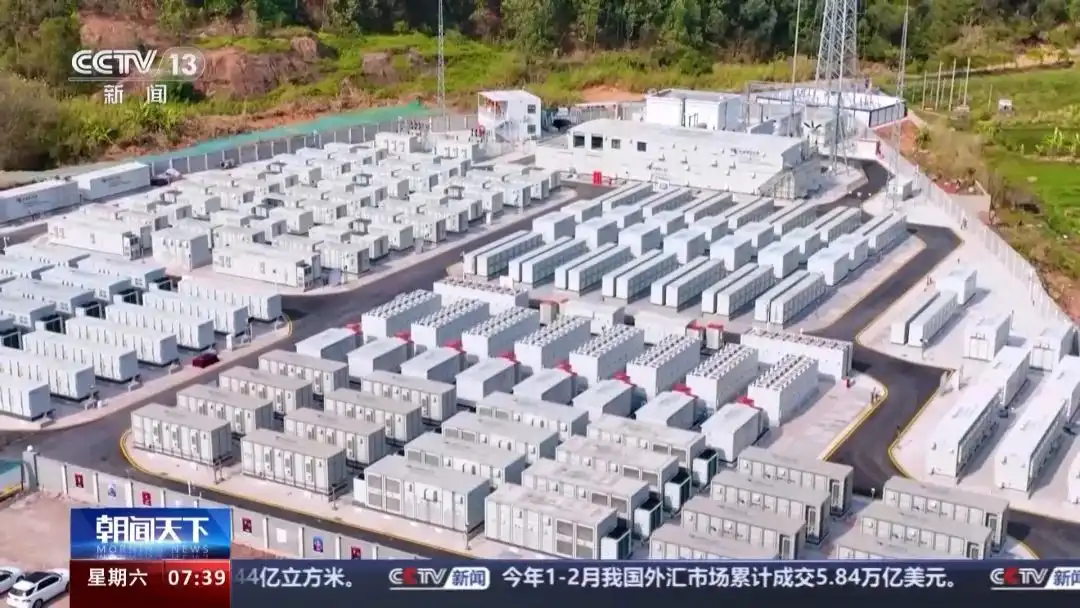
Also look at this battery cluster covering an area larger than 5 football fields, which can store enough electricity to power 200,000 people for a day. Not only is this project flexible in terms of site selection and capable of being deployed in various terrains and environments based on real-world requirements, but it can also respond to the adjustment needs of the power system in milliseconds.
New Energy Storage Embraces “Wind” and Chases “Light” Releasing Tremendous Power
The technical paths and means of implementing new energy storage are still being explored in various regions. In response to the development of China's new energy storage industry this year, the National Energy Administration has just proposed to promote the diversified development of new energy storage, strengthen the policy measures to promote the grid connection and scheduling operation of new energy storage, strengthen the pilot demonstration and tracking evaluation of new energy storage, and promote the progress of new energy storage technology industry. With the continuous addition of relevant policies, the development of new energy storage industry has ushered in a strong "east wind".
As of the end of 2023, the cumulative installed capacity of new energy storage projects completed and put into operation nationwide has reached 31.39 million kilowatts, which is equivalent to the installed capacity of 1.4 Three Gorges Hydropower Stations and can meet the electricity demand of 20 million households.
In 2023, the newly installed capacity of China's new energy storage has been nearly 10 times that of the "13th Five-Year Plan" period, and now the numbers are constantly being refreshed. This year, the number of energy storage projects in Guangdong has increased by more than 5 times year-on-year. This year, Jiangsu will connect 4 million kilowatts of new energy storage to the national grid to meet the needs of power supply and grid regulation. Now, 11 provinces and regions across the country have an installed capacity of more than one million kilowatts.
Since the 14th Five-Year Plan, China's newly added energy storage equipment has directly driven economic investment to exceed CNY100 billion, and further expanded the upstream and downstream of the industrial chain. (Reported by Sun Yuan and Gao Miao)
**(
